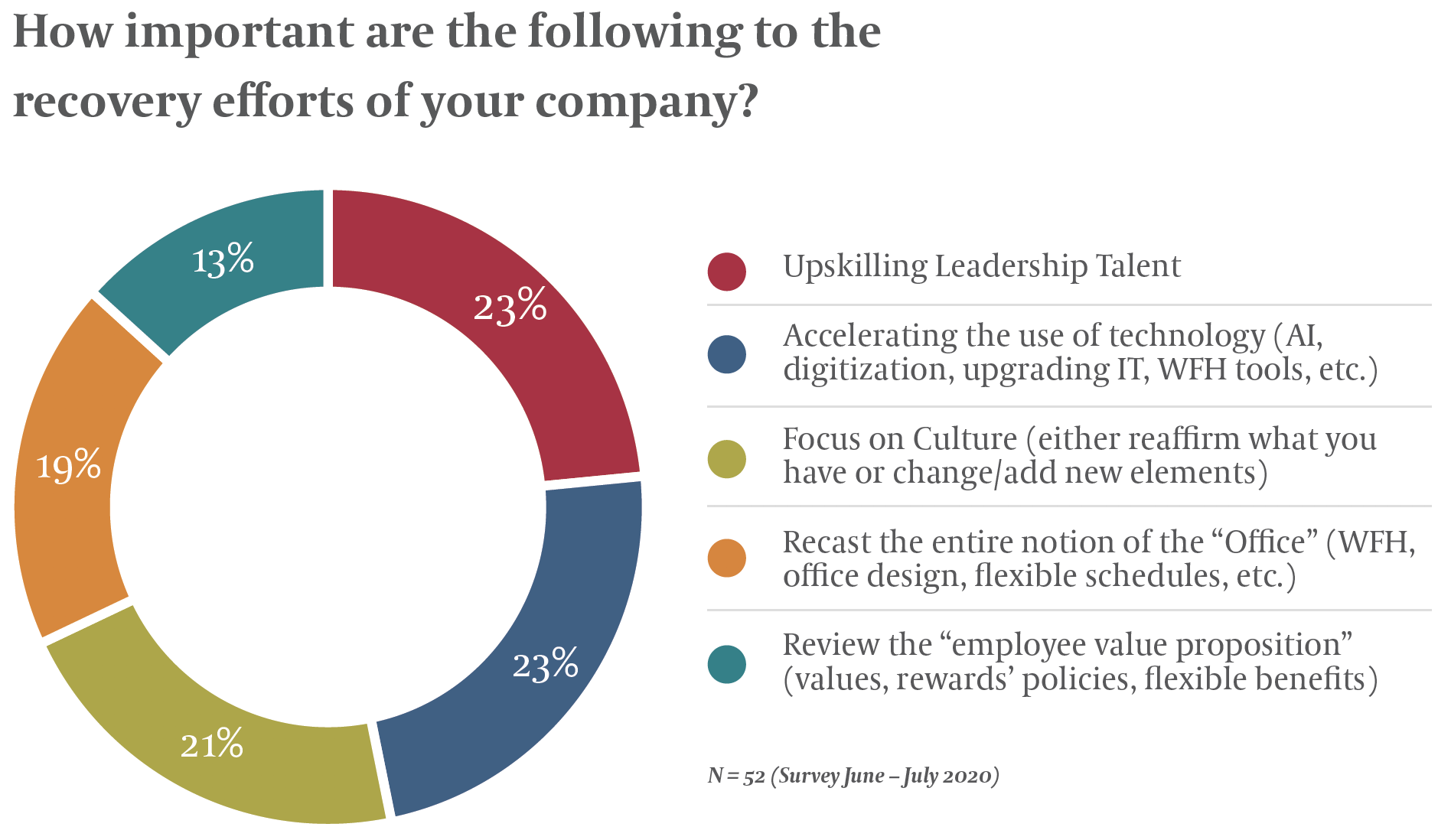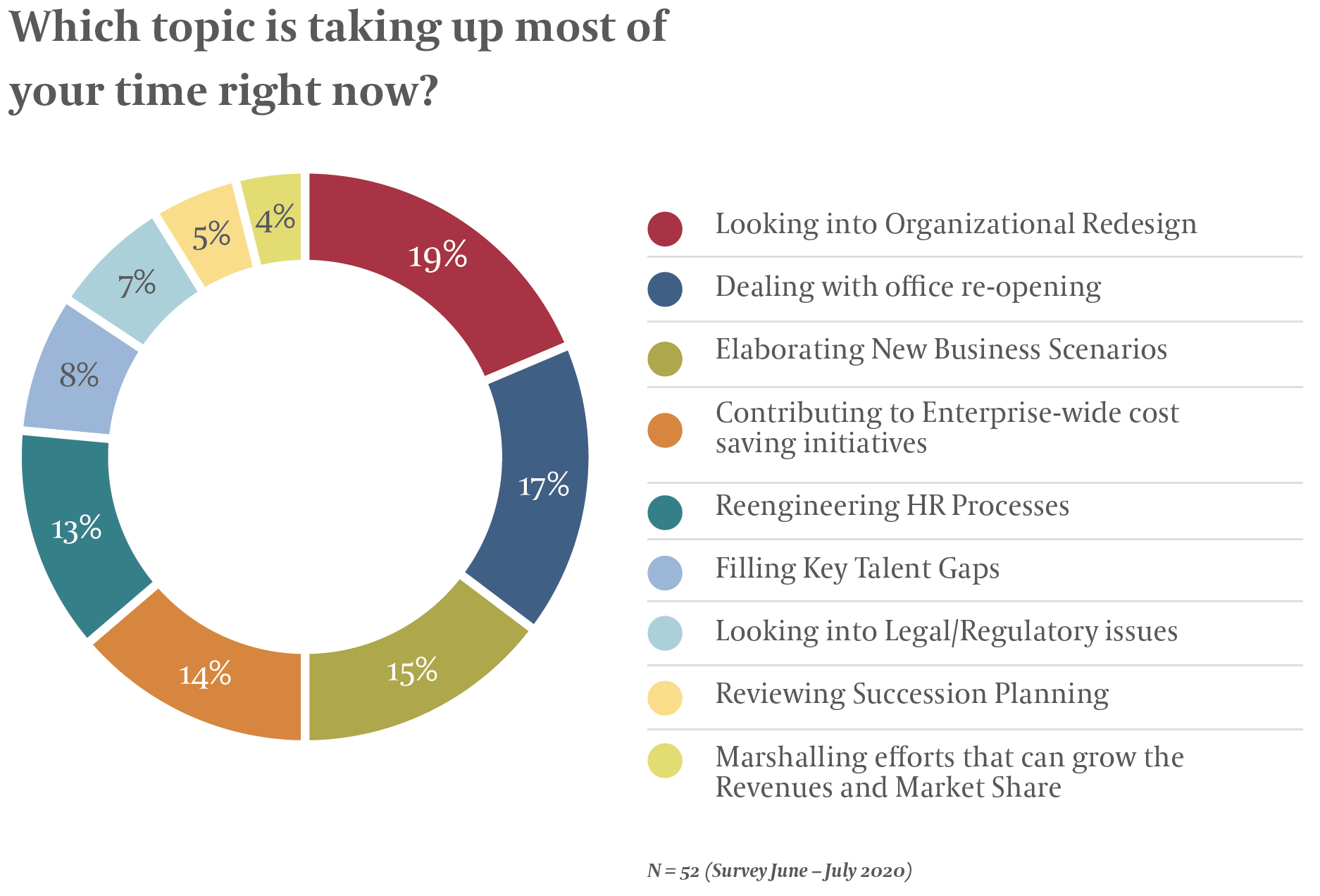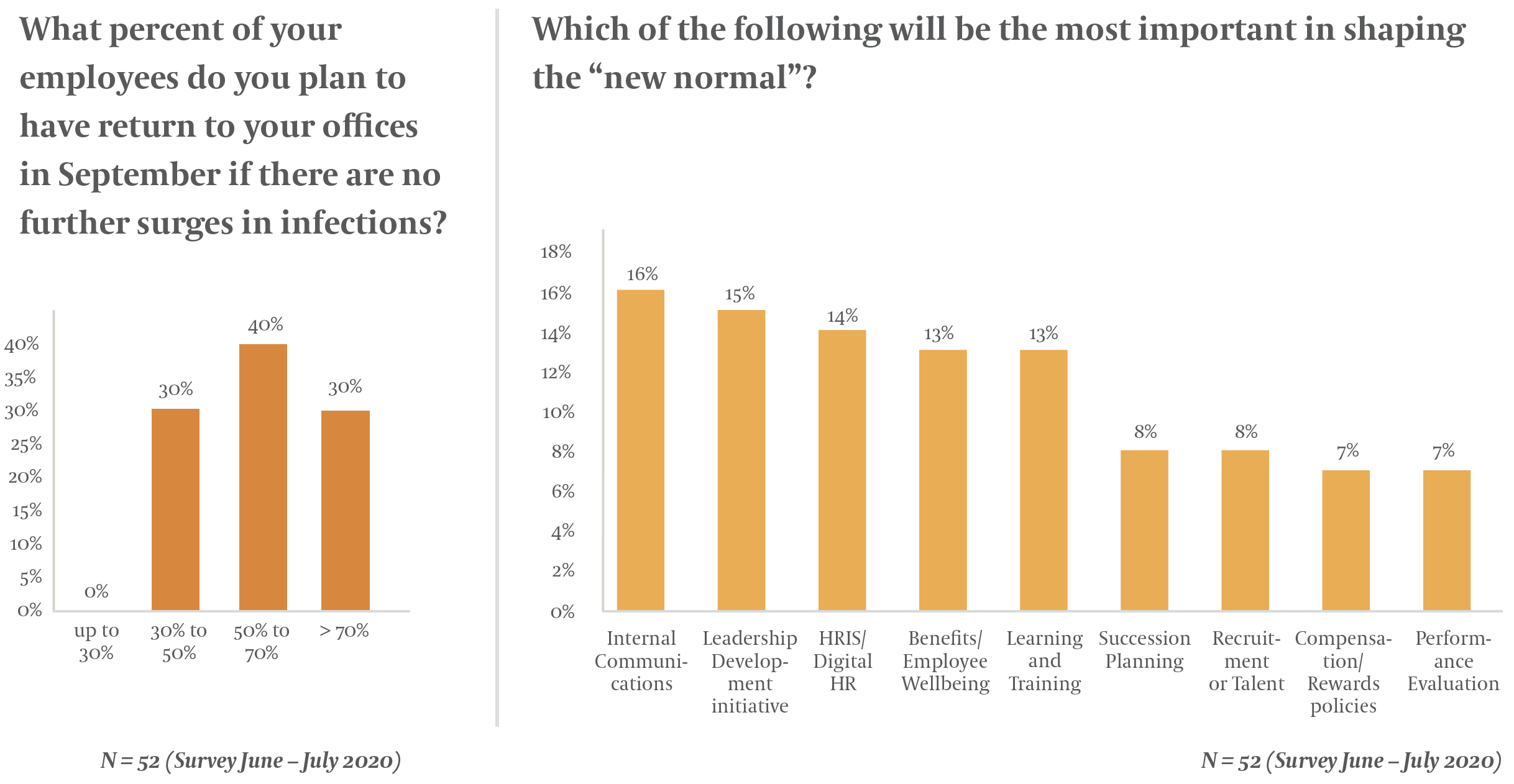Between early June and mid-July, Egon Zehnder held six webinars with a total of 52 Corporate Heads of HR across Portugal. Our objective was to put a finger on the pulse as companies were starting to return to the office. Prior to our calls we asked participants to respond to a short survey.
What we learned was that irrespective of company size, location, industry or sector, HR Directors shared many common experiences during the lockdown. As our survey indicates, there is much uncertainty about the future: as many as 70% of respondents are not planning a full return to the office by September. The top three things they regard as critical to shape the “new normal” are a “Focus on Internal Communications,” “Investing in Leadership Development” and accelerating “HRIS/Digital” tools. Below is a summary of these conversations.
I was amazed at how quickly we moved people to Work From Home. Never would I have dreamt that this was possible, under any circumstances. And if anyone had doubts about the priority of investing in digital processes, HRIS technology and e-commerce, they don’t now.
When asked what most surprised them about the last four months, everyone pointed to how seamless and quickly they were able to transition hundreds, sometimes thousands, of employees to working from home. The challenges were significant: The large majority of these corporations did not even have the computing backbone to make shifts of this magnitude. The experience has led to resounding agreement that capital investments in technology will be accelerated across the board. These leaders were also clear that IT teams were the unsung heroes of the first few weeks of lockdown. They also confirmed that employees responded with grace, speed and efficiency. Finally, CHROs said that they partnered seamlessly with labor unions to make the shift to WFH as smooth as possible.

I was Head of Staffing, personal counselor, Crisis Team Leader, the person that you could vent with any time of day, consiglieri to the CEO, coach to my peers, union negotiator, liaison for Healthcare….all this sometimes in a single day.
Many spoke about the emotional roller coaster that they had experienced, along with the fact that the business challenges were among the most difficult that they had ever faced. Companies with exposure to public markets, or those named as “critical business,” felt a higher level of scrutiny and pressure. They put staff on the frontline and kept them there without knowing when they would be given a break. “Not staying open was not an option. We just had to figure it out.” On the other hand, the adrenaline rush and the sheer scale of the challenges left indelible memories which they look back on with some fondness, knowing this was a truly unique moment in their lives.
This crisis showed what’s possible when we’re all in it together.
In all of our conversations it was clear that this crisis had a levelling effect. Unable to visit operations or to travel to various sites, CEOs and company Leaders had to rely on local staff to implement initiatives. Like the rest of their teams, they had to learn to use new communication tools and protocols. This created both levity and intimacy. As a result, the value of cooperation increased, the importance of breaking down of barriers rose, and the ability to lead with humility and to speak with courage went up several notches. A hallmark of the last few months was the unprecedented level of community, togetherness and boundarylessness.
Some leaders emerged from the least expected places. Others disappointed. This crisis did a lot to separate who can truly lead under pressure, and who did not.
We heard several stories about people who ended up emerging as unexpected leaders. In some cases these were rank and file staff. In others it was a manager that had never caught the attention of executives. Yet there were also cases where people in positions of authority disappointed. “The fact is that we watched a wide range of personal reactions: some rose to the challenge, others froze.” There was a wide discussion about adding more weight to the value of “agility,” to “leading dispersed teams,” and to “engagement” in assessing leadership competencies. As a result, several of these HR Leaders plan to review their definitions of leadership and rethink their promotion criteria.

This crisis showed my peers how much more value the HR function has beyond what they imagined. The key is whether this will be temporary or whether it will lead to more lasting change.
Overall, the CHROs we spoke to believe that the HR function came out ahead during the lockdown. Initially this was driven by the primacy of ensuring employees’ safety. But after weeks turned into months, most CEOs turned to the CHRO to help them develop processes and tools to help the workforce adapt to longer lockdown scenarios. HR leaders agreed that it was not lost on their CEOs that “their work on values and culture” anchored the organization’s business continuity plans. Both collectively and individually, most of the HR leaders on these calls conveyed that they felt ever more needed as leaders and partners on the front line. Of course, it is not yet clear whether this will lead to a more lasting change for the HR function.
Looking ahead, what is occupying the minds of CHROs is the ability to communicate, to continue to invest in the development of leaders, and the importance that technology will have in the future. Clearly, not everyone expects to have a full return to where things were just a few months ago. While uncertainty is a given, what we heard consistently was that “it matters who we select as leaders.”






